Rabbit stories could be a sub-genre of children’s literature. Perhaps starting with The Tale of Peter Rabbit, we have loved to read about rabbits as anthropomorphized small humans. They get into all kinds of scrapes, try to run away (Runaway Bunny by Margaret Wise Brown), turn from velvet to real (The Velveteen Rabbit by Margery Williams), take bicycle trips (Wherever You Go by Pat Zietlow Miller) — even do yoga (Yoga Bunny by Brian Ruso).
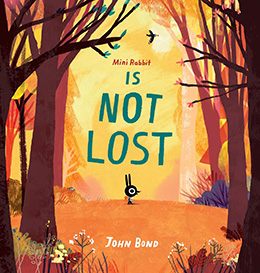 In Mini Rabbit Is Not Lost by John Bond, Mini Rabbit loves cake! And Mother Rabbit is making cake, but there are no berries. “No berries. No cake,” says Mother Rabbit. “No way!” replies Mini Rabbit and heads off to look for berries. Mother Rabbit knows there are berries close by, but Mini Rabbit leaves before she can tell him. Chanting cake, cake, cake Mini Rabbit wanders far, even gets on a boat — and off again, trudges through snow, drops down a cliff, all in search of berries. Never lost, just looking for berries. Finally, inside a cave with a creature with quite terrifying eyes, Mini Rabbit is lost. He starts to sniffle sadly — and sniffs a berry! Carefully Mini Rabbit re-traces his steps, following the smell of Mother Rabbit’s cake, and gets the berry back home. It’s the perfect topping for cake. But now Mini Rabbit wants ice cream.
In Mini Rabbit Is Not Lost by John Bond, Mini Rabbit loves cake! And Mother Rabbit is making cake, but there are no berries. “No berries. No cake,” says Mother Rabbit. “No way!” replies Mini Rabbit and heads off to look for berries. Mother Rabbit knows there are berries close by, but Mini Rabbit leaves before she can tell him. Chanting cake, cake, cake Mini Rabbit wanders far, even gets on a boat — and off again, trudges through snow, drops down a cliff, all in search of berries. Never lost, just looking for berries. Finally, inside a cave with a creature with quite terrifying eyes, Mini Rabbit is lost. He starts to sniffle sadly — and sniffs a berry! Carefully Mini Rabbit re-traces his steps, following the smell of Mother Rabbit’s cake, and gets the berry back home. It’s the perfect topping for cake. But now Mini Rabbit wants ice cream.
This story is charming in so many ways. The Rabbit family does not live underground like regular rabbits, but in a tree house. Mini Rabbit gives no thought to the logic of berries and where they might be found but is driven by the logic of moving. And perhaps it was never the berries. Perhaps it was just the adventure. What young rabbit does not want adventure? (And we are left to wonder at the end — will the ice cream need something that sends Mini Rabbit off on another adventure?)
The singlemindedness of small children (and some large ones), the fearlessness, resourcefulness, and success in berry finding make us love Mini Rabbit. We love Mini Rabbit more than cake.
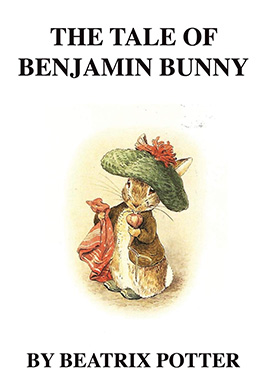 Beatrix Potter’s Benjamin Bunny also wanted adventure. And when he finds his cousin Peter, wrapped in a bandana because he lost his clothes in Mr. McGregor’s garden (Mr. McGregor has used them to dress his scarecrow) Benjamin suggests they go back to the garden. Peter is not fond of that idea but can’t say no to his cousin. In the garden Peter gets his clothes back, a little shrunk. The two bunnies find onions, which they wrap in the bandana. They’re about to leave when the garden cat surprises them. They take cover under a basket, which the cat decides to sit on — for five hours! Finally Old Mr. Benjamin Bunny strolls by, quickly goes from fence to garden, dispatches the cat, uses a switch on young Benjamin and Peter, and takes charge of the onions. All ends well, except for a puzzled Mr. McGregor who can’t figure out how his cat got locked in the greenhouse, from the outside!
Beatrix Potter’s Benjamin Bunny also wanted adventure. And when he finds his cousin Peter, wrapped in a bandana because he lost his clothes in Mr. McGregor’s garden (Mr. McGregor has used them to dress his scarecrow) Benjamin suggests they go back to the garden. Peter is not fond of that idea but can’t say no to his cousin. In the garden Peter gets his clothes back, a little shrunk. The two bunnies find onions, which they wrap in the bandana. They’re about to leave when the garden cat surprises them. They take cover under a basket, which the cat decides to sit on — for five hours! Finally Old Mr. Benjamin Bunny strolls by, quickly goes from fence to garden, dispatches the cat, uses a switch on young Benjamin and Peter, and takes charge of the onions. All ends well, except for a puzzled Mr. McGregor who can’t figure out how his cat got locked in the greenhouse, from the outside!
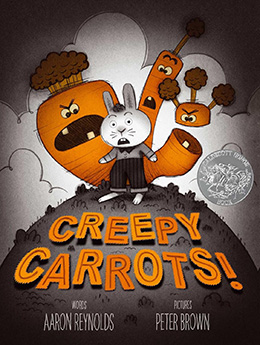 In Creepy Carrots, Jasper Rabbit has more adventure than he wants. Jasper loved carrots. “Jasper couldn’t get enough carrots,” especially the carrots in Crackenhopper Field. One night, “Jasper was about to help himself to a … snack … when he heard it. The soft … sinister … tunktunktunk of carrots creeping…”
In Creepy Carrots, Jasper Rabbit has more adventure than he wants. Jasper loved carrots. “Jasper couldn’t get enough carrots,” especially the carrots in Crackenhopper Field. One night, “Jasper was about to help himself to a … snack … when he heard it. The soft … sinister … tunktunktunk of carrots creeping…”
And that is just the beginning. He sees carrots in the shed, in the bathroom, in his room. He hears “terrible, carroty breathing.” Jasper decided “Creepy carrots were real and they were coming for him!”
Jasper “hatches a plan.” He gathers supplies (which include an excavator) and begins to build a wall around the carrot field. When he finishes the wall he is finally relaxed and happy. No more creepy carrots. But the carrots are happier. The wall that keeps them in keeps Jasper out.
This story is so much fun. The language is a romp — “the soft … sinister … tunk of carrots breathing.” We don’t really know what Jasper is seeing in his bedroom, bathroom, and shed. There is plenty of orange. He might be mistaken about the carrots. On the other hand, it does seem like the carrots have had a plan. We love the not-knowing of the story and the twist at the end when Jasper turns out to be, if not an unreliable narrator, an unknowing narrator — and we especially love Jasper on the excavator digging the moat.
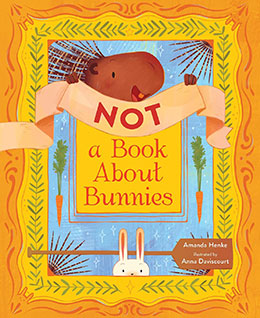 In Not a Book About Bunnies Amanda Henke gives center stage to Porcupine because, as Porcupine says, “There are lots of books about bunnies. And hardly any about porcupines.” Porcupine proceeds to tell readers how new-born porcupines, called porcupettes, are soft and fuzzy and not at all prickly. When they grow up and have quills, they are quite “Spike-tacular,” which Porcupine demonstrates with a big quilly Ba-Poof! (And who wouldn’t want to read Ba-Poof out loud?) Throughout the book we see Rabbit watching in the background, even though Porcupine keeps insisting that this is NOT a Book about bunnies.
In Not a Book About Bunnies Amanda Henke gives center stage to Porcupine because, as Porcupine says, “There are lots of books about bunnies. And hardly any about porcupines.” Porcupine proceeds to tell readers how new-born porcupines, called porcupettes, are soft and fuzzy and not at all prickly. When they grow up and have quills, they are quite “Spike-tacular,” which Porcupine demonstrates with a big quilly Ba-Poof! (And who wouldn’t want to read Ba-Poof out loud?) Throughout the book we see Rabbit watching in the background, even though Porcupine keeps insisting that this is NOT a Book about bunnies.
“Hop off the page please,” Porcupine says. “I bet there is a fluffle of bunny fans nearby just waiting for you to be puff-a-rific.” When Bunny finally gets to explain that being fluffy and adorable is boring and that Bunny wants to be bristly and dangerous and have thrills and adventures like Porcupine, Porcupine still insists, “This is NOT a book about BUNNIES!”
“I KNOW!” Bunny says, “It’s about you, Porcupine.” And Bunny knows just the place for the book. The final spread shows the two new friends sharing the book together at the local library.
Anna Daviscourt’s art is as lively as the text, with warm colors and dialogue balloons. Read this book for the fun language, the appealing art, and the deliciously funny story. Read it because it is a book about porcupines (NOT bunnies, except, well, one bunny) and ends in one of our favorite places: the library.
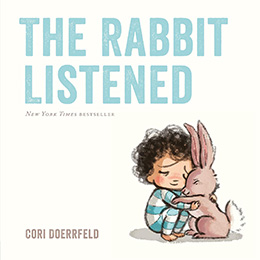 In Cori Doerrfeld’s The Rabbit Listened Taylor builds something new and amazing with blocks … until a squall of frightened birds flies across the page and “things came crashing down.” Taylor curls into a sad ball, and one by one the animals offer advice. The chicken suggests that they talk, talk, talk about it, but Taylor doesn’t feel like talking. The Bear says, “I bet you feel so angry. Let’s shout about it!” But Taylor doesn’t feel like shouting, either. The elephant wants to fix things by remembering how to rebuild the block structure. The hyena wants to laugh about it, the ostrich wants to pretend it didn’t happen. Animal after animal offers suggestions, but Taylor doesn’t feel like doing any of them. When the animals all leave and Taylor is alone again, a rabbit moves closer and closer until it is leaning up comfortingly against Taylor. After they sit awhile in silence, Taylor asks the rabbit to stay, and the rabbit listens as Taylor talks, shouts, remembers, laughs, and goes through all the suggestions of the other animals while the rabbit simply listens. Finally, heartache healed, Taylor plans to build something again, and the rabbit listens as Taylor says, “It’s going to be amazing,” Art shows an image of what Taylor plans to build — and it is, indeed, amazing.
In Cori Doerrfeld’s The Rabbit Listened Taylor builds something new and amazing with blocks … until a squall of frightened birds flies across the page and “things came crashing down.” Taylor curls into a sad ball, and one by one the animals offer advice. The chicken suggests that they talk, talk, talk about it, but Taylor doesn’t feel like talking. The Bear says, “I bet you feel so angry. Let’s shout about it!” But Taylor doesn’t feel like shouting, either. The elephant wants to fix things by remembering how to rebuild the block structure. The hyena wants to laugh about it, the ostrich wants to pretend it didn’t happen. Animal after animal offers suggestions, but Taylor doesn’t feel like doing any of them. When the animals all leave and Taylor is alone again, a rabbit moves closer and closer until it is leaning up comfortingly against Taylor. After they sit awhile in silence, Taylor asks the rabbit to stay, and the rabbit listens as Taylor talks, shouts, remembers, laughs, and goes through all the suggestions of the other animals while the rabbit simply listens. Finally, heartache healed, Taylor plans to build something again, and the rabbit listens as Taylor says, “It’s going to be amazing,” Art shows an image of what Taylor plans to build — and it is, indeed, amazing.
Not only does this story work through various responses to loss, disappointment, and grief in a non-didactic way, but the voices of the animals are also great fun to read aloud — roaring like a bear, trumpeting like an elephant, hissing like a snake, laughing like a hyena. The book reminds us in the gentlest of ways that sometimes the best friendship we can offer is simply to be like a long-eared rabbit and listen.
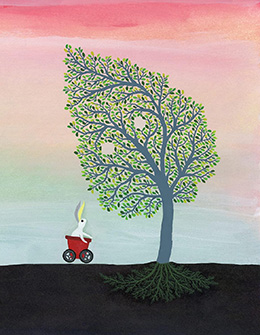 We can’t resist one more rabbit book, even though it has no words to read out loud and even though it is many pages longer than a traditional picture book — Bunny and Tree by Hungarian artist Balint Zsako. This book is wonderfully satisfying to us, like a combination shadow puppet show and a dream.
We can’t resist one more rabbit book, even though it has no words to read out loud and even though it is many pages longer than a traditional picture book — Bunny and Tree by Hungarian artist Balint Zsako. This book is wonderfully satisfying to us, like a combination shadow puppet show and a dream.
In the first few spreads luminous art shows a seed sprouting and growing into a tree. When a ferocious wolf attacks a group of bunnies of many colors, one bunny runs under a tree, which takes on the shape of a monster and frightens the wolf away. Dialogue balloons with images show Bunny wondering what has happened to the other bunnies. Tree, who by now has “eyes,” holes in its branches just where eyes should be, responds (also with a pictograph dialogue balloon) that they should go find them. Bunny digs up Tree, puts Tree in a red wagon, and the two set off in search of the other bunnies.
Succeeding spreads show Tree providing transportation as a locomotive and a sailboat. When Bunny pushes Tree up a mountain, Bunny calls out for the other bunnies, but no one answers, and Bunny weeps. A passing bird points Bunny toward two mountains, and Tree transforms into a plane to fly them there. When they arrive Bunny calls again for the other bunnies. And they come!
Together the rabbits dig a hole, replant Tree, and nest among its roots. The tree provides leafy food for the bunnies — and these bunnies are not too dream-like to poop!
The story ends with seeds falling and more trees growing, a tree for each bunny in a joyous and colorful community. Words don’t do this book justice, but it doesn’t need words for us to feel the strength of this unlikely friendship and delight in a community of friends where rabbits — and trees — come in all colors.
Rabbits hop all through children’s books. And what’s not to like about them? Rabbits are cuddly, cute, sometimes funny — and show us the way to truths that might be too hard without long ears and round, fluffy tails. And rabbits in books can’t raid our vegetable gardens. We hope you’ll hop into the habit of rabbit books this spring.

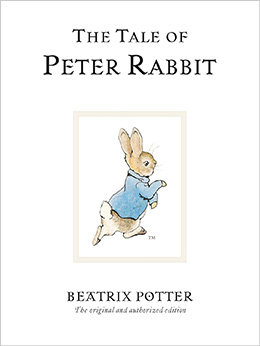
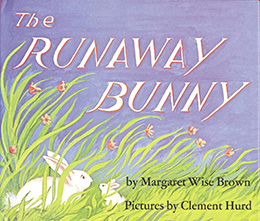
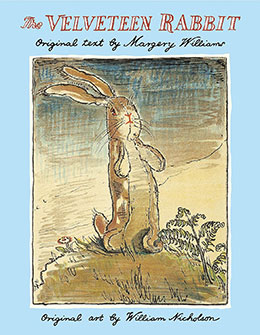
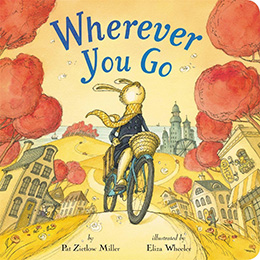
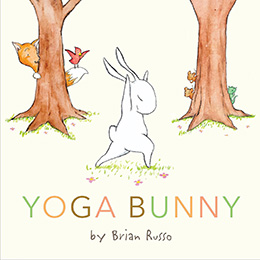

Adorable! I loved this tour through bunny books by two of my favorite readers.
Bunnies are the best! I love WHEREVER YOU GO and THE RABBIT LISTENED. I know there’s the issue/school of thought about the proliferation of animal characters in picture books reducing the opportunity to show diverse human children. But I adore animal characters. And visually, I’d much rather look at animals than humans :>) When we were in Scotland a couple of years ago, we went to the Beatrix Potter Garden in Dunkeld. Such a treat! Your lovely roundup evoked lots of memories and ponderings, plus a few more additions to my tbr shelf…thanks!
I requested Bunny and Tree. My 7 year old grandson loved it. He took it home to share with his brothers!